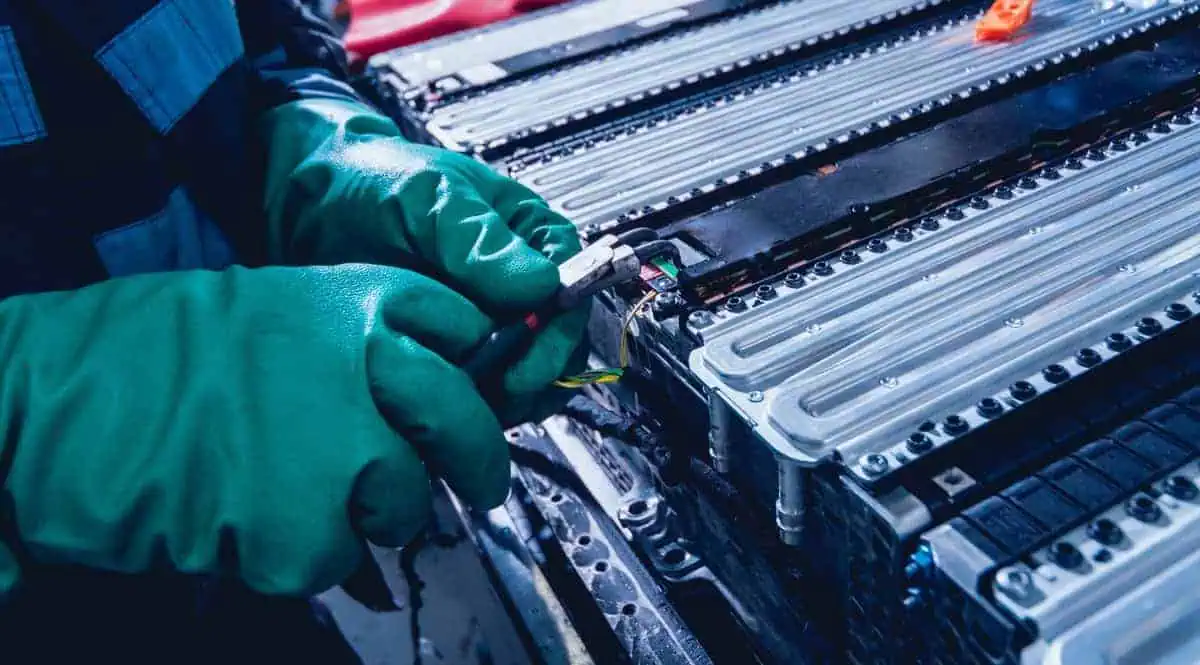Graphite, a pure form of carbon, is an essential material for battery anodes. Graphite’s physical structure enables it to store lithium ions, which transfer to the anode when the battery is charged.
Unlike cathodes, which can be made of various chemicals (cobalt, nickel, manganese, lithium, iron, phosphorus, and so on), all current anodes used in EV batteries are made primarily from graphite.
Moreover, there is another candidate for this vital position. Silicon is lighter and has the potential to store more energy than graphite.
Some battery designs incorporate limited portions of silicon into the graphite to enhance battery performance. Finding ways to include more Si in anodes is a crucial focus of battery research.
World’s most energy-dense cells
NanoGraf, a Chicago-based materials developer founded in 2012, has created a novel silicon-based anode material that it claims has the long-term possibility of replacing graphite-based anodes, enhancing energy and power density while offering excellent cycle life.
In 2021, the company developed the world’s most energy-dense 18650 cells, a 3.8 Ah cylindrical lithium-ion cell for the US Department of Defense.
The cell, which will go into commercial production soon, is intended to give military members more runtime for electronic equipment.
It’s also meant to save their backs, as soldiers may carry up to 20 pounds of batteries to power communication and other essential devices.
The DOD awarded NanoGraf a $1 million development contract in 2022 to create a more powerful, longer-lasting 4.3 Ah battery.
Connor Hund, Chief Operating Officer of NanoGraf, recently spoke with Charged about graphite, silicon, and the search for more powerful, longer-lasting batteries.
It’s a fundamentally less stable material, which is why you can’t build the whole anode out of silicon. It’ll fracture and swell over time with too much in the anode
Connor Hund, COO of NanoGraf stated on NanoGraf’s battery
Silicon-based anodes replacing graphite
Historically, graphite made up the entire anode, but most commercial cells today use 5 to 8% silicon oxide in the anode.
Silicon stores ten times the energy that graphite does, but it is a fundamentally less stable material, which is why it cannot be used to construct the entire anode.
Too much silicon in the anode will fracture and swell over time, but that’s the point—you get more potential in the battery if you can use more silicon consistently.
What we’re doing is injecting lithium into that core initially. We’ve sort of pre-swelled the material already before we’re putting it into a battery
Connor Hund, COO of NanoGraf stated on NanoGraf’s battery
The percentage expansion of silicon exceeds that of graphite
With graphite, swelling can range from 10% to 15%. It can be as high as 50% with silicon and first-generation silicon oxide materials.
It will still expand more than traditional graphite. This allows the reaction to occur earlier in manufacturing, resulting in a more durable fabric.
Within the battery, regular anode material will interact with lithium.
During charging, lithium ions are stored in graphite or silicon
The negative side of the battery is the anode, and there is a lithium-ion supply between the anode and the positive side, which is the cathode.
These are divided by a separator material or membrane, and the difference between a full and empty state of charge defines which side of the battery those lithium ions are on.
Specific types of carbon are used in anodes and can be silicon
Silicon is classified into two types: silicon oxide and silicon carbide.
When you compare NanoGraf to some of our competitors, you’ll notice that they don’t pair silicon with oxygen. NanoGraf has the same elements, but it’s secured better.
That comes down to the prelithiation and the surface coating material we put around that silicon oxide core. This also keeps it from fracturing, swelling, and other problems.
NanoGraf’s proprietary manufacturing process
At the battery cell factory level, an anode slurry is mixed, which could be all graphite or a mixture of graphite and silicon—using the same production processes they presently use to mix graphite or first-generation silicon oxide.
Without going into too much detail, we’re able to use a manufacturing approach that has been proven to be scalable in other industries, which allows us to lower our scale-up risk and manufacturing risk. If we used fully customized equipment or expensive input materials that have not yet been scaled, we would be taking a significant manufacturing and scale-up risk. We can avoid doing things like that
Connor Hund, COO of NanoGraf stated on NanoGraf’s manufacturing process
Upcoming new technologies
Different manufactures have very different strategies for solid-state battery cells, some of which replace entirely the anode and others that do not.
QuantumScape claims to be replacing the entire system. Solid Power has transitioned their approach, as have some others, toward architectures that fundamentally similarly use anode materials, and for which our material would be a great fit and an excellent complement to forcing their energy density in solid-state batteries even higher.






